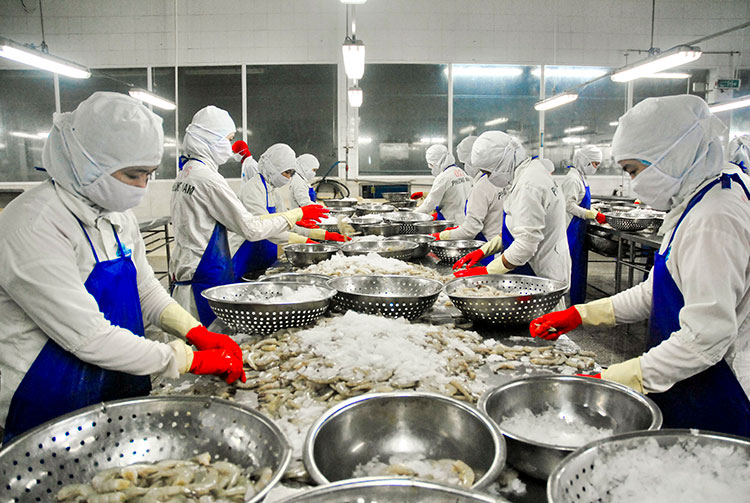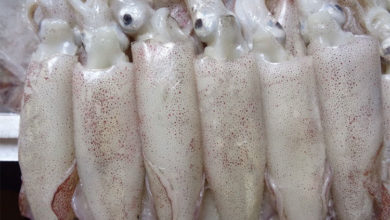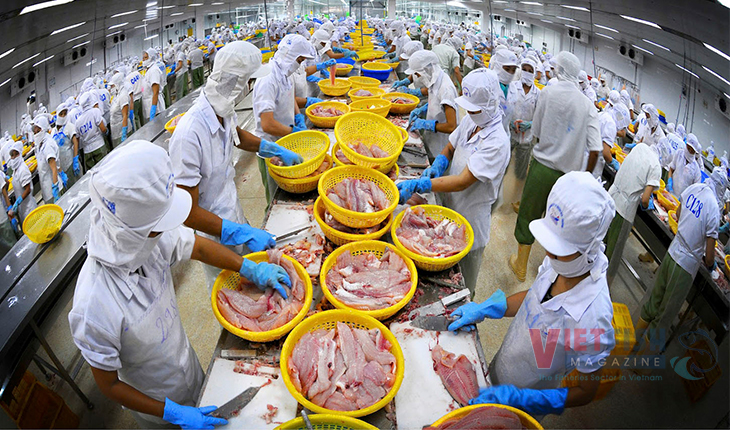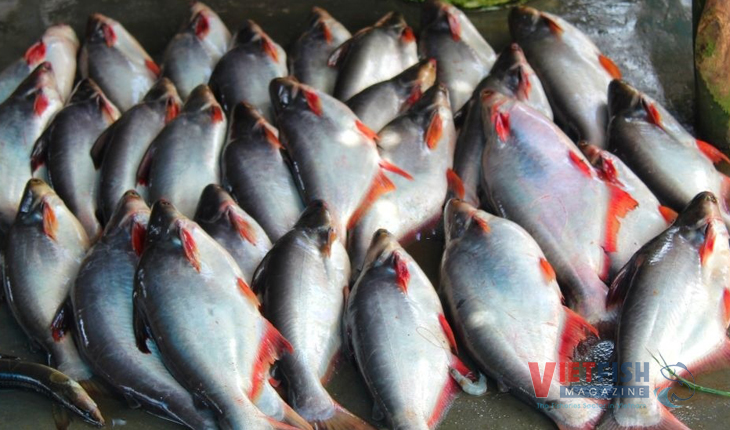Seafood exports return to the record level of 2022
For the first time in 27 months since June 2022, monthly seafood exports have reached USD 1 billion, marking an important step in the recovery of Vietnamese seafood companies.
On November 1st, the Vietnam Association of Seafood Exporters and Producers (VASEP) reported that October’s seafood exports surged strongly, reaching USD 1 billion, a significant milestone for Vietnamese seafood businesses. Cumulatively, by the end of October 2024, seafood exports totaled USD 8.27 billion, marking an 11.4% increase compared to the same period in 2023.

The impressive growth results of the seafood industry in October occurred admist a strong increase in demand for seafood imports from key markets. In particular, exports to China and Hong Kong (China) surged by 37%, confirming their position as the largest and fastest-growing markets of the month. Other markets also showed significant growth: exports to the U.S. increased by 31%, Japan rose by 22%, the EU grew by 27%, while South Korea saw a more modest increase of 13%.
By the end of October, the total value of seafood exports to China, Hong Kong (China), and the United States has reached USD 1.5 billion. Notably, the strong growth rate from China and Hong Kong (China) may surpass the United States in the final months of the year, if the 20% growth rate seen over the past 10 months is maintained. If this growth rate continues, China and Hong Kong (China) could become Vietnam’s largest seafood export market by the end of 2024.
According to VASEP, although the European economy is recovering at a lower pace compared to the US and China, positive signals from consumption levels and the recovering import prices of seafood are showing promising prospects for Vietnamese businesses. By the end of October 2024, exports to the EU had increased by 11% compared to the same period last year.
In contrast, seafood exports to Japan and South Korea only saw modest growth, ranging from 1.5% to 2%. Factors such as prolonged inflation have significantly impacted consumer demand in these two markets. Japan, once one of Vietnam’s top two export markets, has dropped to third rank in 2024, with a turnover of USD 1.25 billion in the first 10 months of the year, while South Korea only reached USD 646 million.
In this context, shrimp and pangasius are two products with greater export growth potential in 2024. By the end of October 2024, shrimp export value surpassed USD 3.2 billion, marking an increase of 13%, while pangasius exports earned nearly USD 1.7 billion, up 10%. In October alone, value of shrimp and pangasius exports saw a strong surge, with increases of 26% and 24% respectively, surpassed tuna and cuttlefish.
Vietnamese shrimp industry received good news on October 22, 2024, when the U.S. Department of Commerce announced preliminary countervailing duties (CVD) on shrimp imports from Ecuador, India, and Vietnam. The duty rate for Vietnamese shrimp is 2.84%, significantly lower than India’s 4.36% and Ecuador’s 7.55%. This provides a key competitive advantage for Vietnamese shrimp in the U.S market.
VASEP anticipates that, although the shrimp and pangasius enterprises are in the peak import season, they continue to face a shortage of domestic raw material. Businesses need to be more flexible in utilizing stored raw materials and alternative supply sources to fully capitalize on market opportunities.
Among marine products, crabs, and bivalve molluscs have maintained strong growth momentum since the beginning of the year. In October, exports of crabs and other crustaceans increased by 58%, while bivalve molluscs saw a dramatic rise of 138%. During the first 10 months of the year, these two product groups generated revenues of USD 267 million and USD 173 million, respectively, represeting an increase of 66% and 58% compared to 2023. With reduced seafood imports from the United States, especially for high-end products, China has increased its imports from Vietnam, creating opportunities for these two product groups.
The export of tuna and cuttlefish saw positive growth in October, though at a lower pace compared to the first half of the year, due to the impact of regulations under Decree 37 on controlling wild caught seafood. This has caused delays in certification and verification processes at many fishing ports. Specifically, the export of skipjack tuna, the main ingredient for canned products, has been completely stalled at the harvesting stage, as fishermen fear violating the minimum size regulation of 0.5 meters for skipjack tuna, or that they won’t be able to sell their catch to processing factories for export.
VASEP affirms that the fishing industry is still anxiously waiting and hoping for a more positive outcome after the EU’s IUU inspection program scheduled for November 2024. If the outcome is favorable, tuna exports this year could reach USD 1 billion as they did in 2022.






